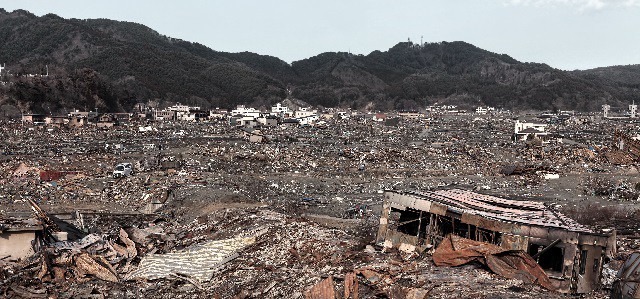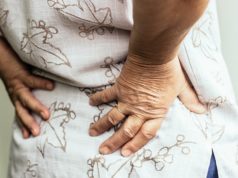
Little scientific research has studied the causal effect of psychosocial factors on low back pain, largely because of the inability of scientists to control psychosocial stress as a variable. A cohort study from Fukushima Medical University School of Medicine, Fukushima, Japan, however, has been able to track the likely effect of psychosocial stress related to the Great East Japan disaster on low back pain.
In March 2011, a 9Mw undersea megathrust earthquake—the fourth-largest ever recorded—struck off the Pacific coast of Japan. One of a number of powerful tsunamis interfered with cooling systems at the Fukushima I nuclear power plant, leading to three reactor meltdowns— the largest nuclear accident since the Chernobyl disaster in 1986.
In January 2011, researchers assessed 95 medical and nursing students at Fukushima Medical University via a survey using the Japanese version of the Perceived Stress Scale (JPSS) as part of a longitudinal study investigating stress and the characteristics of low back pain. One student was excluded for regular hospital treatment for pre-existing low back pain. The earthquake struck two months later, causing “the majority of students [to be] strongly affected by multiple disaster stressors, including disaster victim distress, grief experience, fear of radiation hazards, and anxiety regarding the recovery of Fukushima.”
Follow-up surveys took place at four and 14months post-disaster. Changes in JPSS from baseline to four months post-disaster were used to divide students into three groups (“improved”: -19 to -4, n=32; “maintained”: -3 to +4, n=33; “aggravated”: +5 to +22, n=29; mean=+0.2). As well as recording incidence of low back pain itself, the Brief Pain Inventory questionnaire was used to capture the interference of such pain with daily living. “Linear regression modelling was performed with Brief Pain Inventory at four months after the disaster as the outcome,” the authors wrote. They used “JPSS change, gender, history of low back pain, baseline physical activity and baseline Brief Pain Inventory as explanatory values.”
The researchers found that the “aggravated” group had significantly increased Brief Pain Inventory scores (0.79 points higher) at four months than those in the “improved” group. The incidence of back pain itself—once adjusted for confounding factors—was not significantly associated with JPSS change, however. These results, the authors wrote, “suggest that psychosocial stress after the disaster might be associated with low back pain-related interference with daily living.
The authors also performed linear regression using two-year results, finding results which trended towards the associations in the four-month data, without reaching statistical significance. “The trend of secondary analysis was similar to that of the main analysis, suggesting the presence of stress-caused low back pain,” the authors wrote. Interestingly, the researchers did not observe low back pain following the disaster in any student who had not suffered from back pain in the past. At baseline, 70 (74.5%) of the participants had experienced low back pain.
“To the best of our knowledge,” the authors write in the article published online in Spine, “the present study represents the only investigation to measure changes in validated stress scores of participants before and after a disaster and to evaluate association between psychosocial stress and low back pain-related interference with daily living due to disaster-related psychosocial stress.”
The novelty of the study did not preclude it from limitation, with authors noting the small sample size and lack of information regarding clinical variables as problems with the research.
Concluding, the authors argue that their results show that psychosocial stress could be a risk factor for low back pain-related interference with daily living.













